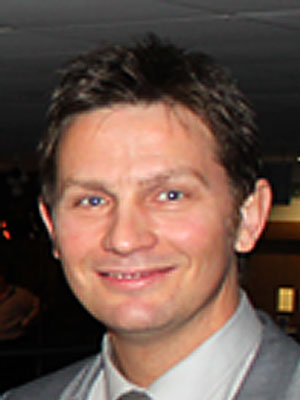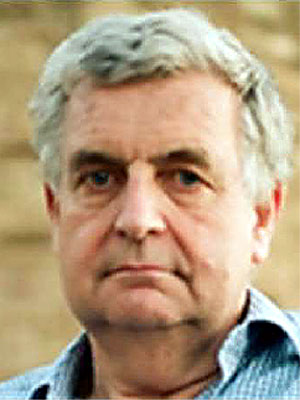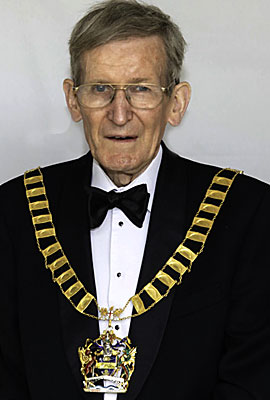Dr Colin Brown, Seminar Chair

Dr Colin Brown CEng FIMechE, Former Chief Executive, Institution of Mechanical Engineers, joined the Institution in May 2005 as Engineering Director, to support its work in responding to the key engineering challenges of this and subsequent generations. He is a thought leader on engineering, and is keen to work with the membership to gain consensus and set the agenda on the societal issues of the day.
After completing his first degree and PhD at Cambridge, Colin spent five years at Rolls-Royce working on life assessment techniques for jet engines and nuclear power plant. With a materials and fracture mechanics background, he first qualified as a Chartered Engineer through the Institute of Metals.
In 1985 he joined BP and took on roles that transformed him from a technical specialist into a business generalist. Always keeping a strong link with engineering and manufacturing, he has worked in many locations around the world. His business interests have been in composite materials, dynamic seals, metal refining and ultrasonic inspection. He also had a spell running the T&N Research Centre at Cawston subsequent to its acquisition by Federal Mogul.
His wide experience in research and commercial roles, as well as his experience of working with the membership over the last 13 years, gives Colin a useful perspective on his new role. He has a strong belief in the ability of all members to add value and to play a significant role in developing the profile and prestige of being a professional engineer.
Andrew Cummings

Andy is Senior Principal Consultant working at DNV Spadeadam involved in Business Development and Strategy. He is currently the Senior Project Manager for DNV on the NGN H21 project with Northern Gas Networks and working on the NIC FutureGrid project with National Grid. He was President of the Institution Gas Engineers and Managers in 2017 and is a Fellow.
He is a Chartered Engineer with over 30 years in the Gas Industry. Andy started in British Gas as an apprentice in 1986.
Andy has undertaken several overseas projects in the City Gas, Due Diligence and Petroleum Regulatory Frameworks. He has also developed Gas Safety Regulatory Guidelines for a Gas Safety Regulator in the Far East and in the Middle East for Qatar Petroleum. He is working with a number of clients assisting with them on development of gas markets. He also chaired several the City Gas Asia Conferences
The future of hydrogen energy is wrapped up with the future of natural gas, renewable energy and carbon capture and storage (CCS). DNV offers a wide range of both technical and business advisory services and, with broad expertise across the energy and maritime industries, we are in a unique position to cover the whole hydrogen value chain. As part of the work on hydrogen research DNV has been involved in a number of hydrogen projects undertaking hydrogen evidence-based research and testing. An overview of the hydrogen research ongoing at DNV Spadeadam Engineering and Research will be presented, including methods used to generate Hydrogen, its important role in energy transition, and the use of Hydrogen for domestic heating.
Synopsis of Andrew Cummings’ presentation: Hydrogen Research – energy transition
and large scale testing
Marcus Taylor

Marcus Taylor is a doctoral research student at the Centre for Fuel Cell and Hydrogen Research at the University of Birmingham. He conducts computational modelling of fuel cell systems for heavy-duty vehicle applications.
In 2019, he worked in the Programme Office of the Fuel Cells and Hydrogen Joint Undertaking in Brussels, which funds fuel cell and hydrogen research and innovation projects across Europe.
He graduated in 2017 from Churchill College at the University of Cambridge with a Master’s degree in Chemical Engineering.
Despite climate change commitments, carbon dioxide emissions from transport in Europe have continued to rise. Electrification is key to reversing this trend; however, battery technology may not meet all performance requirements. Hydrogen is emerging as an attractive fuel for zero-emission transport, especially for demanding heavy-duty applications. Hydrogen vehicles run already today; they can be refuelled quickly, have a large range and are safe to use. This paper presents the latest developments and future projections for hydrogen not only in road transport, but also in rail, shipping and aviation.
Synopsis of Marcus Taylor’s presentation: Hydrogen in Transport
Simon Bailey

Simon Bailey BSc(Eng) CEng MICE, is a Senior Associate Director and Jacobs global technical lead for hydropower. He has over 40 years’ experience in water resources and hydropower planning for major water and energy infrastructure projects. He has
extensive experience not only in the UK but also in the Middle East, Africa, SE Asia, Central Asia and Eastern Europe. His particular expertise is in mathematical modelling and optimisation for water resources and hydropower projects worldwide.
He was involved with the original Foyers pumped storage scheme and on feasibility studies for small hydro with SSE. Later he was client liaison and programme engineer on the DfID funded Victoria dam and hydroelectric project, as well as a feasibility study for the Samanalawewa hydropower project, both in Sri Lanka, and was responsible for the planning and optimisation of the Lesotho Highlands water and hydropower project in Southern Africa. Recently he was involved in a technical due diligence assessment for the Dinorwig & Ffestiniog pumped storage plants and was involved with the preparation of the BEIS levelised cost report published in 2016, being responsible for the component on pumped hydro. Lately he has been involved with numerous hydropower and pumped storage planning studies in the Asia Pacific region.
Simon has recently authored a strategy paper on the potential for the
development of long duration energy storage to meet the UK’s net-zero
emissions targets by 2050. Scope involved liaising with BEIS, the CCC and National Grid, to assess the future storage needs for balancing intermittent renewables generation with an evaluation of alternative energy storage technologies including pumped hydro, hydrogen storage, compressed and liquid air storage, as well as solid-state batteries.
Jacobs presented a paper in August 2020 on a Strategy for Long-Term Energy Storage to meet the UK’s net-zero emissions targets by 2050. The findings of this paper showed there will likely be several types of energy storage required for future balancing of the UK power system, in order to assist in meeting the net-zero emissions targets. This could range from short-term storage (for a few hours), to medium-term storage (for a few days) and long-term storage (for weeks/seasons), but the precise requirements for both the demand side and the supply side in terms of capacity and location has yet to be established.
Synopsis of Simon Bailey’s Presentation: Long, Medium & Short Duration Energy Storage.
This current paper assesses the specific requirements of long, medium & short duration storage needed to meet the UK’s net-zero emissions targets by 2050 and will be an essential pre-requisite to the justification of the necessary incentive mechanisms needed for the promotion of the various storage technologies and can provide the necessary evidence that BEIS, the CCC and National Grid ESO are looking for.
Objective of the paper is to show how a combination of short and medium duration storage may be usefully implemented for the dual functions of balancing the daily load curve on the demand side, while at the same time balancing intermittent renewables generation on the supply side.
The paper shows how short and medium duration storage can provide the necessary capacity for daily peak-lopping and generally reducing stress at distribution level, while at the same time showing how long duration storage, at transmission level, comprising both hydrogen storage located on the East coast of England and pumped hydro located in Scotland/Wales, may be used to effectively balance intermittent renewables ‘when the wind doesn’t blow’ or the ‘sun doesn’t shine’
Peter Blair-Fish

Dr Peter Blair-Fish MA PhD CEng FICE MEI DMS has forty years’ professional experience of Engineering, Procurement and Construction for oil and gas, railways, marine works and buildings. He has worked in Australia, France, India, Libya, Norway, Oman and the United Arab Emirates, as well the UK.
He worked mostly on oil and gas projects for thirty three years, rising to senior project manager. He managed the design and installation engineering of several large steel offshore structures in the North Sea in water depths of up to 186 metres. He has also worked on the management of railway projects including the Eurostar terminus at Waterloo and several projects for London Underground.
His most recent projects include the management of engineering for part of an alumina refinery in Guinea, part of a large gas to liquids project in Qatar, and for a storage and loading facility for liquefied natural gas in arctic Russia.
Peter has held several important posts at the Institution of Civil Engineers (ICE) including Member of Council. He has appeared at a planning enquiry as a transport adviser. He has been a member of EMSTA as a representative of ICE since July 2014, and was instrumental in the success of a number of EMSTA’s Seminars.
He has been a Liveryman of the Worshipful Company of Engineers since 1996. On 16 March 2021 he was elected to be the Master Engineer and was installed in office on 5 May 2021.
Peter will offer the Vote of Thanks at the end of the seminar.
